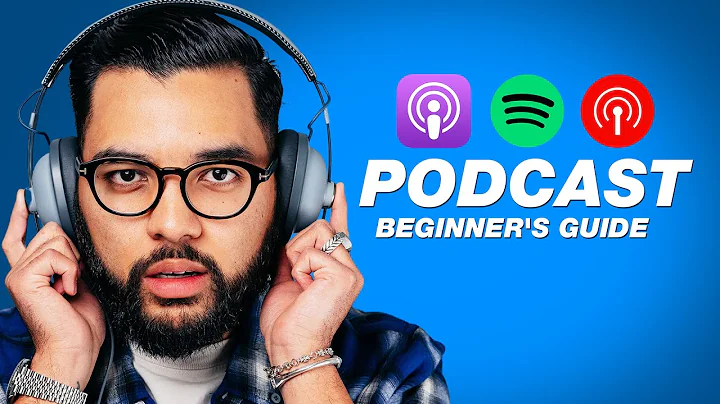Start a Podcast
In an era where content is king and digital platforms are constantly evolving, starting a podcast has become one of the most exciting and accessible ways to share your voice with the world. Podcasts offer a unique platform to discuss topics you’re passionate about, connect with likeminded individuals, and even build a community around your interests. Whether you’re a seasoned media professional or a complete novice, launching a podcast can be a rewarding venture. Here’s a comprehensive guide to help you get started on your podcasting journey.
1. Define Your Purpose and Audience
Identify Your Niche
Before diving into the technical aspects of podcasting, it’s crucial to define your podcast’s purpose and target audience. Ask yourself what you’re passionate about and what unique perspective you can bring to the table. Are you interested in true crime, technology, personal development, or perhaps storytelling? Narrowing down your niche will help you tailor your content and attract a dedicated audience.
Understand Your Audience
Knowing who you want to reach will shape your content and format. Conduct research to understand your potential listeners’ interests and preferences. Consider creating listener personas to visualize who you’re speaking to and what they want from your podcast. This will help guide your content creation and marketing strategies.
2. Plan Your Content
Format and Structure
Decide on the format of your podcast. Will it be solo, cohosted, or interviewbased? Each format has its own set of dynamics and requires different preparation. For example, interviewbased podcasts need scheduling and guest coordination, while solo podcasts demand strong selfdiscipline and engaging content.
Create a content calendar to plan your episodes in advance. This should include episode topics, recording dates, and release schedules. Consistency is key in podcasting; having a regular schedule will help retain listeners and grow your audience.
Outline Your Episodes
Draft outlines for each episode to keep your content focused and engaging. This doesn’t mean scripting every word, but having a clear structure—introduction, main content, and conclusion—will help maintain a smooth flow. Prepare key points and questions in advance to ensure you stay on track.
3. Get the Right Equipment
Essential Gear
Investing in goodquality equipment is crucial for producing clear and professionalsounding audio. Here’s a basic list of what you’ll need:
Microphone: A highquality microphone is essential. USB microphones are userfriendly and affordable, while XLR microphones offer superior sound quality but require an audio interface.
Headphones: A good pair of closedback headphones will help you monitor audio quality and prevent sound leakage.
Pop Filter: This accessory helps reduce plosive sounds (like “p” and “b” sounds) that can distort your audio.
Audio Interface: If you’re using an XLR microphone, an audio interface will convert your analog signal into a digital one that your computer can understand.
Recording Software
Choose recording and editing software that suits your needs. Free options like Audacity are great for beginners, while paid software like Adobe Audition or GarageBand offers more advanced features. Learn the basics of audio editing, such as cutting out mistakes, adjusting volume levels, and adding effects.
4. Record and Edit
Find a Quiet Space
Recording in a quiet space minimizes background noise and improves audio quality. You don’t need a professional studio; a quiet room with minimal echo can work well. Consider using soundproofing materials or blankets to improve acoustics.
Recording Tips
Speak clearly and at a consistent volume. Maintain a steady distance from the microphone to avoid variations in audio quality. Record multiple takes if necessary, and don’t be afraid to experiment with your delivery style.
Editing
Editing is where you refine your podcast to make it polished and professional. Cut out mistakes, awkward pauses, and background noise. Adjust levels to ensure consistent sound quality throughout the episode. Add intro and outro music to create a cohesive listening experience.
5. Publish and Promote
Choose a Hosting Platform
Select a podcast hosting platform to publish your episodes. Platforms like Libsyn, Podbean, and Anchor offer reliable services and analytics. Your hosting platform will provide you with an RSS feed, which is essential for distributing your podcast to directories like Apple Podcasts, Spotify, and Google Podcasts.
Create EyeCatching Cover Art
Design cover art that reflects your podcast’s theme and attracts potential listeners. This visual element is crucial for making a strong first impression and standing out in podcast directories.
Promote Your Podcast
Marketing your podcast is essential for growing your audience. Use social media to share episodes, engage with listeners, and join relevant communities. Consider collaborating with other podcasters or influencers to expand your reach. Encourage your listeners to leave reviews and ratings, which can help boost your podcast’s visibility.
6. Stay Consistent and Evolve
Maintain a Consistent Schedule
Stick to your release schedule to build a loyal audience. Consistency helps establish trust with your listeners and keeps them coming back for more.
Seek Feedback and Improve
Listen to feedback from your audience and use it to improve your content. Stay open to making changes and experimenting with new formats or topics to keep your podcast fresh and engaging.
Conclusion
Starting a podcast is an exciting opportunity to share your voice, connect with others, and explore your passions. With careful planning, the right equipment, and a commitment to quality content, you can create a podcast that resonates with your audience and stands out in a crowded digital landscape. Embrace the journey, and most importantly, have fun bringing your ideas to life. Happy podcasting!
